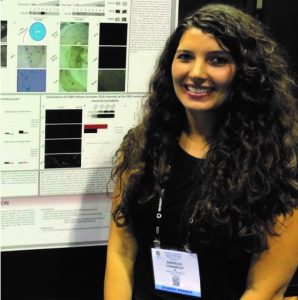 Project
Project
Metabolic Changes After Disruption of 16p11.2 Gene Expression
Laboratories
Hazel Sive, Ph.D., Rudolf Jaenisch, Ph.D.
Biographical information
The work during Danielle’s undergraduate career and as a laboratory technician resulted in co-authorship on 5 papers. Under Dr. Laurie Read at the State University of New York and Buffalo, she acquired expertise in molecular biology and biochemical techniques. As a predoctoral student the lab of Dr. Bhattacharjee at the State University of New York and Buffalo, she gained proficiency in many new techniques including chromatin immunoprecipitation, dissection and culturing of adult and embryonic dorsal root ganglion neurons, whole-cell voltage and current clamp electrophysiology, and immunohistology. Within the lab, Danielle pioneered techniques in mouse pain model surgery, including neuropathic, both acute and chronic inflammatory models, and behavioral experimentation. These techniques were instrumental to her work examining the Slick (Kcnt2) potassium channel during my predoctoral training. Danielle went on to carry out projects to uncover the role of this largely uncharacterized potassium channel and made the discovery that; 1 – Slick is predominantely regulated by the proinflammatory transcription factor NFkB (Tomasello et al. JBC 2015), and 2 – Slick channels limit calcitonin-gene related peptide containing neuron excitability and diminish chronic pain in mouse models (Tomasello et al. JEN 2017). She gained much experience and knowledge in the neuroscience field and wanted to continue her career understanding mental health disorders.
Current Work
The goal of my project is to identify disrupted metabolic pathways that underlie 16p11.2 deletion (16pdel) syndrome. The genetic basis for neurodevelopmental and mental health disorders is complex, making diagnostics unreliable and personalized treatments unavailable. 16pdel syndrome, affecting 1 in 2000 individuals, is associated with severe and heterogeneous disease manifestations, including autism spectrum disorder (ASD), intellectual disability and epilepsy. As underlying genetic contributions to each symptom are unclear, treatments are based upon individual disorders and not specifically towards the genes implicated. We set out to define underlying biochemical changes that contribute to disease manifestations associated with 16pdel syndrome. Specifically, we are taking an innovative and novel metabolomics approach to dissect the complex 16p11.2 interval.
